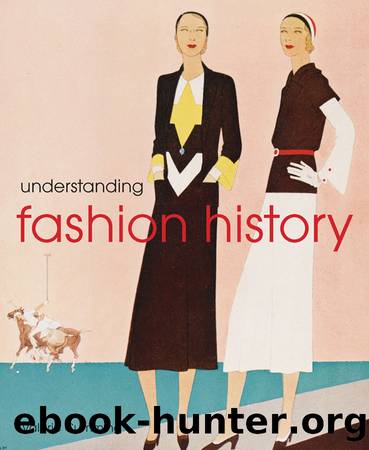Understanding Fashion History by Valerie Cumming

Author:Valerie Cumming
Language: eng
Format: epub
Publisher: Batsford
5 Dress in art and dress as art
âI see little justification for continuing to produce works on dress which are only illustrated by works of art; if there are surviving garments, why not show them?â Jane Tozer1
âI would certainly not affirm that fashion is not art ⦠But this is something for others to judgeâ. André Courrèges2
The emphasis on studying dress as an adjunct to the history of the fine and decorative arts has a respectable history and heavyweight advocates, as we saw in chapter 1. This is hardly an unusual state of affairs; in many areas of life it makes good sense to be an ally, if sometimes an unwilling one, of the powerful consensus. The natural alliance for dress historians within academic circles seemed to be with art historians and it is unsurprising that the first postgraduate history of dress course in the world was introduced at the Courtauld Institute of Art in 1965. Its founder, Stella Mary Newton, had previously worked at the National Gallery, contributing her expertise to the important series of catalogues compiled there from the 1950s onwards. Many of the early students of the postgraduate course were viewed with suspicion as they began careers in curatorship, lecturing and writing. The small annual intake of students and the lack of serious competition from other universities fostered this idea of a privileged caste destined to interpret dress only within fine art or as an art.
Jane Tozerâs remark given at the head of this chapter may or may not have been aimed at the Courtauld approach to dress history. By the mid-1980s those Courtauld-trained students who worked in museums were as interested as Jane Tozer in the diversity of dress studies; dress as material culture or social history was as relevant as dress as an applied or decorative art. The important point about this Courtauld course was that its founder had not been trained as an art historian. Stella Newton (1901â2001), doyenne of academic dress historians and both a terrifying and inspirational teacher, had not studied anything in a formal way. She had been a minor actress, a dress designer and a designer of theatrical costume; among her most notable commissions were the costumes for the first production of T S Eliotâs Murder in the Cathedral. Her husband, Eric Newton, was a distinguished art critic and writer with a particular interest in Venetian art, but who influenced who is uncertain. It was probably a fairly equal match. She could look at paintings with the practical discernment of someone who knew how clothes were made, and how fashions were disseminated and adjusted for the purposes of performance. In truth, all dress in art is a type of performance, the equivalent of deciding, editing, consulting about what is worn for a sitting which, in some medium or other, will be captured for posterity.
There is an obvious problem with the history of dress in all of its manifestations and that is although textiles survive from early periods and cultures of
Download
This site does not store any files on its server. We only index and link to content provided by other sites. Please contact the content providers to delete copyright contents if any and email us, we'll remove relevant links or contents immediately.
Sketching User Experiences by Saul Greenberg(306)
Plain Simple Useful by Terence Conran(301)
The Fundamentals of Fashion Design by Richard Sorger and Jenny Udale(297)
A Hut of One's Own: How to Make the Most of Your Allotment Shed by Emily Chappell(280)
Making Costume Jewelry: An Easy & Complete Step by Step Guide by Janet Evans(277)
3D Printing for Artists, Designers and Makers by Hoskins Stephen(260)
Do You Feel Like I Do? by Peter Frampton & Alan Light(250)
Illuminated Paris by Hollis Clayson(246)
Racinet's Historic Ornament in Full Color by Auguste Racinet(244)
The Basics of User Experience Design: A UX Design Book by the Interaction Design Foundation by Mads Soegaard(243)
Data Driven Design: How Today's Product Designer Approaches User Experience to Create Radically Innovative Digital Products by Phillip A. Harris(243)
Easy Ikebana by Shinichi Nagatsuka(190)
Interior Design for Autism from Childhood to Adolescence by A. J. Paron-Wildes(187)
Historic English Costumes and How to Make Them by Talbot Hughes(186)
Illustrated Guide to Door Hardware: Design, Specification, Selection by Tobias Scott;(165)
Contemporary Japanese Restaurant Design by Motoko Jitsukawa & Cornucopia K. K(157)
Textiles and Gender in Antiquity by Mary Harlow;Cecile Michel;Louise Quillien;(145)
Launching the Imagination 3D by Stewart Mary & Stewart Mary(141)
